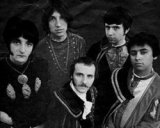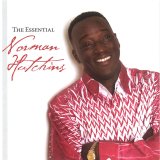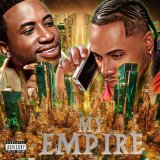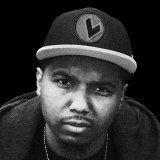Famous lyrics by »

H. P. Lovecraft was an American psychedelic rock band, formed in Chicago, Illinois, in 1967 and named after the horror writer H. P. Lovecraft (born Howard Phillips Lovecraft on 20 August 1890; died 15 March 1937). Much of the band's music was possessed of a haunting, eerie ambience, and consisted of material that was inspired by the macabre writings of the namesake author. Combining elements of psychedelia and folk rock, the band's sound was marked by the striking vocal harmonies of ex-folk singer George Edwards and the classically trained Dave Michaels. In addition, Michaels' multi-instrumentalist abilities on organ, piano, harpsichord, clarinet and recorder provided the band with a richer sonic palette than many of their contemporaries. The band signed to Philips Records in 1967 and released its first single, "Anyway That You Want Me", in the early part of that year. Their first album, H. P. Lovecraft, followed in late 1967 and included what is arguably the band's best-known song, "The White Ship". The band then relocated to San Francisco, California, where they became a frequent attraction at various San Francisco Bay Area venues, including The Fillmore and the Winterland Ballroom. In 1968, a second album, H. P. Lovecraft II, appeared, but the group disbanded in early 1969. Edwards, and fellow original member Michael Tegza, subsequently formed a new line-up of the band with the shortened name of Lovecraft, although Edwards left this new group before the first album was recorded. This second incarnation of the band released the album "Valley of the Moon" in 1970 and, after a further name change to Love Craft, they released the album "We Love You Whoever You Are" in 1975. The album sold poorly and, as a result, the band were dropped by their label and disbanded shortly thereafter. Founder George Edwards had been a folk troubadour in Chicago, California and Florida, whose repertoire included covers of The Beatles’ “Norwegian Wood” and Bob Dylan’s “Quit Your Low Down Ways”, as well as early songs by Fred Neil and Terry Callier, with both of whom he played in clubs. Vocalist/keyboard player Dave Michaels, who had previously played in jazz groups with David Sanborn, boasted a classical training and a four-octave range. After covering Chip Taylor’s “Any Way That You Want Me” with members of Chicago band The Rovin’ Kind , Edwards and Michaels became the creative force behind the group. After getting clearance for use of the writer’s name from his executors, they recruited Tony Cavallari (lead guitar), Mike Tegza (drums) and Jerry McGeorge (bass), and a debut album for Philips, H. P. Lovecraft, soon followed. Featuring a nine-piece orchestra, it juxtaposed covers such as Dino Valente’s hippie anthem “Get Together” and the early Randy Newman ballad “I’ve Been Wrong Before”, with band-written songs including the jazzy “That’s How Much I Love You (More Or Less)” and vaudeville psychedelia in “The Time Machine”. A musical tribute to their novelist namesake, based on his short story “The White Ship”, was drenched in hallucinatory harmonies, droning feedback, baroque harpsichord passages and the chiming of a genuine 1811 ship’s bell. The band’s sound was distinguished by the dual lead vocals of Edwards and Michaels—influenced by Fred Neil’s earlier work with Vince Martin—the intricate organ and harpsichord work of Michaels, and the propulsive drumming of Tegza. Several of their songs attempted to communicate the eerie atmosphere of the writings of their namesake. Their power and imagination as a live group can be heard on Live at the Fillmore: May 11, 1968, recorded after McGeorge had been replaced by Jeffrey Boyan, and issued in the 1990s. A second studio album, H. P. Lovecraft II, followed. Although recorded with the band in some disarray, it successfully developed their musical approach and stands as an exemplar of acid rock of the period. Many of the psychedelic effects were apparently created by engineer Chris Huston, previously of Merseybeat band The Undertakers. The album included another song based on a Lovecraft short story, “At the Mountains of Madness,” as well as a contribution from voice artist Ken Nordine on the track “Nothing’s Boy”, and songs by Terry Callier and others. In late 1968, Michaels decided to leave the band to return to university, and H. P. Lovecraft effectively collapsed. A spin-off group, Lovecraft, reformed in the 1970s with Edwards and Tegza from the original line-up, but Edwards very soon left. The group released two more poorly-regarded albums, but had little connection to the first incarnation of the band.
Update this biography »
Complete biography of H.P. Lovecraft »
1 fan
Albums by H.P. LovecraftSort:By AlbumA - Z
Dreams in the Witch House: The Complete Philips Recordings [2005]
| Song | Duration |
|---|---|
| Anyway That You Want Me | 2:40 |
Unknown Album

| Song | Duration |
|---|---|
| The Drifter | 7:03 |
| Wayfaring Stranger | 4:22 |
| That's How Much I Love You Baby (More Or Less) | 6:30 |
| Country Boy & Bleeker Street | |
| Gloria Patria | 0:51 |
| The White Ship | 10:56 |
| It's About Time | 8:51 |
| Let's Get Together | 7:41 |
| That's The Bag I'm In | 2:58 |







Share your thoughts on H.P. Lovecraft with the community:
Report Comment
We're doing our best to make sure our content is useful, accurate and safe.
If by any chance you spot an inappropriate comment while navigating through our website please use this form to let us know, and we'll take care of it shortly.
Attachment
You need to be logged in to favorite.
Log In